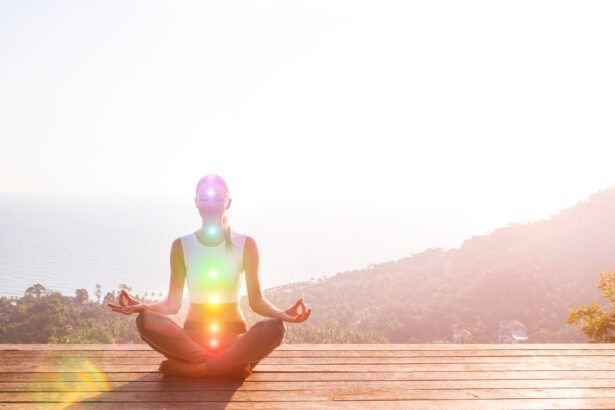
How to meditate? This is one of the first questions students Google or ask a meditation teacher when they consider introducing meditation into their lives. The truth is that there are endless ways to practice meditation, from walking meditation to simple breathing meditation to guided meditation, and it would be wrong to think that there is only one good way to meditate. In this blog post, we want to get to the bottom of the myths surrounding meditation practice.
WHAT IS MEDITATION ?
Meditation is a practice in which a person uses a technique, such as mindfulness, to train their attention and awareness and achieve a state of mental clarity and emotional calm. Meditation has been practiced around the world for centuries and is an integral part of many different religions and spiritual traditions.
TYPES OF MEDITATION PRACTICE
Before we turn to the practical tools that answer the question “How do I meditate?” it is important to explain the main meditation practices that are suitable for beginners and advanced students of all levels.
- Mindfulness meditation: this technique consists of focusing attention on the present moment and becoming aware of one’s thoughts and feelings without judging them. Anyone can practice basic mindfulness meditation, which requires no special equipment or training.
- Transcendental Meditation: This mantra-based meditation technique is considered easy to learn and practice. Transcendental meditation, sometimes considered a spiritual practice, involves repeating a mantra or word or phrase over and over to focus attention and achieve a state of deep relaxation.
- Love and Kindness Meditation: This type of meditation involves cultivating feelings of compassion and kindness toward oneself and others.
- Progressive relaxation: this technique involves slowly tensing and relaxing different muscle groups in your body to relax you. The main idea of progressive relaxation meditation is to focus on the feeling of relaxation and let go of all other thoughts.
- Movement meditation: this type of meditation can be done by walking, tai chi or yoga. The goal is to focus your attention on your body and the sensations you have while moving.
Other types of meditation include vipassana, kirtan, Tibetan Buddhist meditation, walking meditation, and body scan meditation. The technique of Active imagination also involve practice of meditation as well as guided meditation. It’s central technique of my programs
WHY MEDITATE
There are many reasons why people practice meditation. Some people meditate to relax and relieve stress, while others use it as a means to concentrate and increase productivity. Meditation also has several health benefits, such as reducing stress, anxiety, and pain.
Here are the main benefits of meditation:
- Reducing stress levels: meditation has been shown to reduce the body’s stress response, resulting in lower stress levels.
- Reduction of anxiety: meditation can help calm and focus the mind, which can relieve anxiety and worry.
- Pain relief: meditation has been shown to relieve pain by distracting and focusing on the breath.
- Increase energy levels: meditation can also help increase energy levels by improving concentration and focus.
- Better Sleep: The practice of meditation improves the quality and quantity of sleep.
- Better sense of well-being: Meditation increases positive emotional responses and overall life satisfaction.
- A stronger immune system: meditation has been shown to strengthen the immune system by lowering stress levels. The immune system responds to meditation practice much like the body responds to relaxation and laughter.
HOW TO START MEDITATING AS A BEGINNER?
If you’re new to meditation, the prospect of beginning a practice can be overwhelming. There are so many different meditation techniques and styles that it’s hard to know where to start.
First, determine the reason and purpose why you want to start meditating. This may be mental health, physical health, emotional well-being, or some other goal you want to achieve through meditation.
Then set realistic expectations for your practice. Meditation is a process, and it takes time to see results. Be patient and be kind to yourself as you begin your journey. Your path is one of limitless, endless progress, and it’s important that you let it unfold.
Now that you know why you want to meditate, it’s time to try different meditation techniques. For beginners, we recommend trying different styles to see what works best for you.
BASIC STEPS OF MEDITATION PRACTICES
- Choose a comfortable place to sit or lie down. You can also meditate on a chair with your feet apartment on the floor. Make sure your spine is straight and your body is relaxed.
- Close your eyes and take a few deep breaths. Focus on your breath and how it feels as you breathe in and out.
- Let your thoughts come and go without judging them or being attached to them. When you are distracted, simply bring your attention back to your breathing. Start with a few minutes of meditation and gradually increase the duration as you feel comfortable. Remember that there is no “right” way to meditate.
For deeper meditation practices, see suggestions above for guided meditations and other styles. Experiment and find what works best for you. The most important thing is to be consistent in your practice. Regular meditation is most beneficial in the long run.
CONSCIOUS MEDITATION
Mindfulness meditation is a form of mindfulness that can be practiced at any time, whether sitting, walking, eating, or even in the shower.
The difference between mindfulness meditation and other types of meditation is that you do not have to focus on anything in particular. You simply bring your attention to the present moment and observe your thoughts, feelings, and sensations without judging them. When you are distracted, you simply bring your attention back to the present moment.
Mindfulness meditation can be practiced for any length of time, but we recommend starting with ten minutes and increasing from there.
